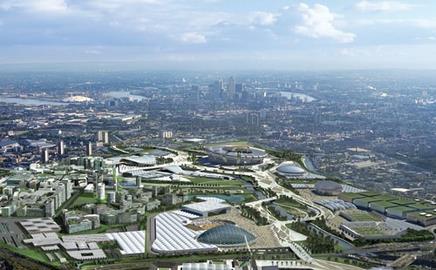The sustainability credentials of the games depend on a number of core themes. Here, Rory Brooke outlines how these themes are made real by on-the-ground projects
The London 2012 Olympic Games and Paralympic Games were won on a platform of securing a lasting legacy for East London and delivering the most sustainable games to date. To achieve these objectives for London, the games should be integrated with regeneration and sustainable development initiatives in the Lower Lea, East London and London region.
Integrating the games with local initiatives involves coordinating the activities of the Olympics with the Greater London Authority Group (which comprises the Greater London Authority, Transport for London, London Development Agency, Metropolitan Police Authority, and London Fire Brigade), local authorities and others.
A London 2012 sustainability plan is being developed by the Olympics partners which builds on already published documents such as the Olympic Delivery Authority’s sustainable development strategy. These documents focus on the themes of climate change, biodiversity, waste, inclusion and healthy living.
In parallel with this work, the GLA group has developed a package of strategies and initiatives. Documents include, for example, the London Plan and the mayor’s climate change action plan. These strategies are backed up by on-the-ground projects, mostly being implemented by the LDA and Transport for London.
This is how the themes are being considered both inside and outside the Olympic Park:
Climate change
The Olympics’ climate change theme aims to minimise the environmental footprint and carbon emissions of the games and their legacy by optimising energy efficiency, reducing energy demand and promoting use of low carbon and renewable energy sources. Initiatives include Gallions Park zero carbon mixed-use development in Beckton Gateway.
The mayor’s Climate Change Action Plan gives comprehensive consideration to all aspects of controlling carbon emissions and, for example, highlights the importance of reducing emissions from existing buildings. A key challenge is to rapidly mature this new area of activity so that policies and projects focus on the most cost-effective solutions.
Biodiversity
The aim is to enhance the ecology of the Lower Lea Valley and other London and regional 2012 venues and to encourage the sports sector generally to contribute to nature conservation.
The Lower Lea Valley Park will greatly enhance the ecology and biodiversity of the Lower Lea. The GLA group is promoting biodiversity more widely – for example, through the Green Grid network. The newly established Design for London Agency is leading on much of this work, with projects like New Cross River Park next to the London Thames Gateway bridge. It is also working with the London Thames Gateway Development Corporation on projects in London Riverside. Partners Westfield and London and Continental Railways are planning for a series of managed parks and ecological areas in their Stratford City development.
Waste
The waste theme aims to be a catalyst for new waste management infrastructure in East London and other regional venues and to demonstrate exemplary resource management.
Examples of waste and recycling initiatives include the LDA’s Enhance programme to advise small and medium enterprises and social enterprises in the waste re-use, recycling and reprocessing sector. Links with the Olympics include a strategy for protecting the right amount of industrial land in the Lower Lea and to allow waste and recycling businesses to have access to affordable land and premises.
The GLA’s safeguarded wharf policies encourage use of the River Thames for transport of waste and recycling products. Hopefully, plans for the use of such wharves and bringing the River Lea back into commercial use will produce new distribution networks.
Healthy living
The healthy living theme aims to promote healthy lifestyles and participation in sport and physical activity across the UK, while helping to tackle health inequalities in an area of London suffering from multiple deprivations.
This ties in with initiatives such as the mayor’s food strategy. The GLA and LDA have been looking in detail at a number of aspects of development of the food sector in London. For example, recent work has looked at consolidating London’s wholesale markets and this could involve moving Billingsgate market from its current location next to Canary Wharf to New Spitalfields (to the north of the Olympics area) and/or New Covent Garden. On-going work is also looking at the potential elements of a London food hub and this could dovetail with forthcoming Olympics work on a strategy for providing sustainable food for the games.
Inclusion
The aim is to ensure that the games promote access, celebrate diversity and facilitate the physical, economic and social regeneration of the Lower Lea Valley and surrounding communities. The LDA has been pursuing the social regeneration of the Lower Lea for a number of years and, for example, has worked with Leaside Regeneration Ltd SRB partnership on a regeneration strategy for Leaside prior to the Olympics. The LDA is also leading on the delivery of the London Employment and Skills Taskforce for 2012.
Source
RegenerateLive
Postscript
Rory Brooke is managing principal, economics and development team, URS

























No comments yet